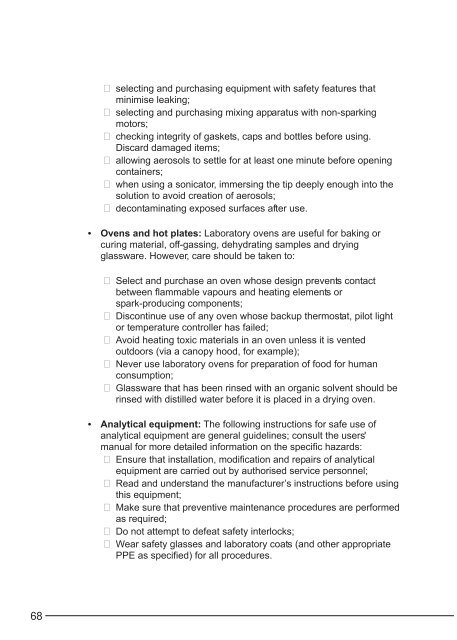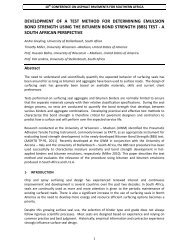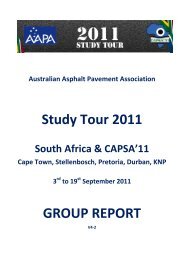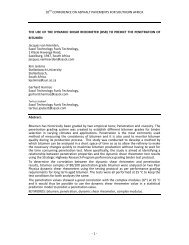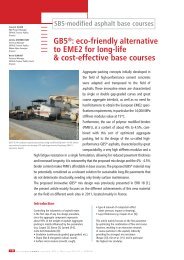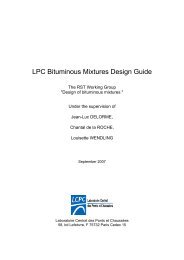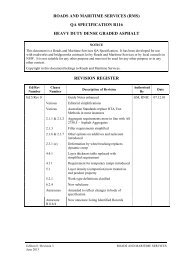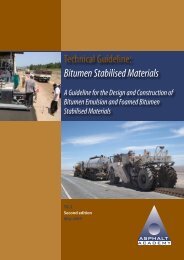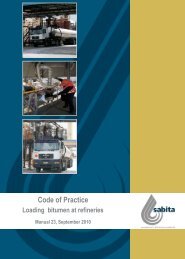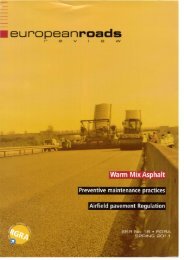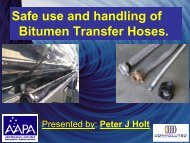Guide to the safe handling of solvents in a bituminous ... - Aapaq.org
Guide to the safe handling of solvents in a bituminous ... - Aapaq.org
Guide to the safe handling of solvents in a bituminous ... - Aapaq.org
- No tags were found...
Create successful ePaper yourself
Turn your PDF publications into a flip-book with our unique Google optimized e-Paper software.
select<strong>in</strong>g and purchas<strong>in</strong>g equipment with <strong>safe</strong>ty features thatm<strong>in</strong>imise leak<strong>in</strong>g; select<strong>in</strong>g and purchas<strong>in</strong>g mix<strong>in</strong>g apparatus with non-spark<strong>in</strong>gmo<strong>to</strong>rs; check<strong>in</strong>g <strong>in</strong>tegrity <strong>of</strong> gaskets, caps and bottles before us<strong>in</strong>g.Discard damaged items; allow<strong>in</strong>g aerosols <strong>to</strong> settle for at least one m<strong>in</strong>ute before open<strong>in</strong>gconta<strong>in</strong>ers; when us<strong>in</strong>g a sonica<strong>to</strong>r, immers<strong>in</strong>g <strong>the</strong> tip deeply enough <strong>in</strong><strong>to</strong> <strong>the</strong>solution <strong>to</strong> avoid creation <strong>of</strong> aerosols; decontam<strong>in</strong>at<strong>in</strong>g exposed surfaces after use.• Ovens and hot plates: Labora<strong>to</strong>ry ovens are useful for bak<strong>in</strong>g orcur<strong>in</strong>g material, <strong>of</strong>f-gass<strong>in</strong>g, dehydrat<strong>in</strong>g samples and dry<strong>in</strong>gglassware. However, care should be taken <strong>to</strong>: Select and purchase an oven whose design prevents contactbetween flammable vapours and heat<strong>in</strong>g elements orspark-produc<strong>in</strong>g components; Discont<strong>in</strong>ue use <strong>of</strong> any oven whose backup <strong>the</strong>rmostat, pilot ligh<strong>to</strong>r temperature controller has failed; Avoid heat<strong>in</strong>g <strong>to</strong>xic materials <strong>in</strong> an oven unless it is ventedoutdoors (via a canopy hood, for example); Never use labora<strong>to</strong>ry ovens for preparation <strong>of</strong> food for humanconsumption; Glassware that has been r<strong>in</strong>sed with an <strong>org</strong>anic solvent should ber<strong>in</strong>sed with distilled water before it is placed <strong>in</strong> a dry<strong>in</strong>g oven.• Analytical equipment: The follow<strong>in</strong>g <strong>in</strong>structions for <strong>safe</strong> use <strong>of</strong>analytical equipment are general guidel<strong>in</strong>es; consult <strong>the</strong> users'manual for more detailed <strong>in</strong>formation on <strong>the</strong> specific hazards: Ensure that <strong>in</strong>stallation, modification and repairs <strong>of</strong> analyticalequipment are carried out by authorised service personnel; Read and understand <strong>the</strong> manufacturer’s <strong>in</strong>structions before us<strong>in</strong>gthis equipment; Make sure that preventive ma<strong>in</strong>tenance procedures are performedas required; Do not attempt <strong>to</strong> defeat <strong>safe</strong>ty <strong>in</strong>terlocks; Wear <strong>safe</strong>ty glasses and labora<strong>to</strong>ry coats (and o<strong>the</strong>r appropriatePPE as specified) for all procedures.68


